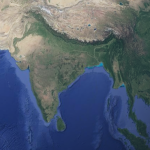Abstract
The Great Firewall of China (GFoW) has successfully shielded the Chinese people and feeds them a one-sided view of the world. The challenge for any adversarial nation is to breach this Information Wall and carry their narrative to the Chinese people. This piece is based on the author’s personal experience in IW during the Ladakh Crisis in 2020-21 and the challenges in penetrating the GFoW. It identifies chinks in the Chinese armour especially technological, social and cultural vulnerabilities which can be exploited. It further recommends a basic structure to formalise and institutionalise IW as a force multiplier against the Chinese propaganda machine and influence the perceptions of the average Chinese who are insulated from the rest of the world.
Keywords: China, Great Firewall of China, 50 Cent,
Introduction
The Chinese Three Warfare Strategy is well articulated. It aims to use three means of Information – media, legal & psychological- to change the perception of the adversary and its people into believing the Chinese narrative. While China professes and propagates such warfare as part of its non-contact warfare strategy, it is equally conscious of denying the same to the adversary. This has been done by creating an information wall around itself, reminiscent of the Great Wall of China, which was constructed as a defensive measure against the Manchu hordes. The information will effectively block access to foreign social, electronic & print media to its own people from outside China. Also called the GFoW (Great Firewall of China), (Standford University, n.d.) it is a set of legal and technological measures employed to regulate domestic internet usage. The GFoW is the Chinese government’s proactive approach to regulating external influences over cyberspace and prohibits or blocks any content that might be viewed as detrimental to national security or inappropriate for its population.
This creates a one-sided challenge for nations adversarial to China, who cannot influence the Chinese people’s perceptions and shape the narrative to their favour by penetrating the GFoW.
In the standoff in Ladakh in 2020, the Indian people were bombarded with Chinese media: CCTV 9, the official TV channel of China; Global Times, the bombastic but fully controlled newspaper and news agency of China; the PLA Daily and the People’s Daily, all of which carry sanitised and curated content meant to influence the adversary’s perception. Many of our media channels had no authentic sources of information about the Chinese military, their strategy, plans, developments or actions throughout the crisis. Resultantly, Indian footloose and often wayward media left nothing to the imagination, lambasting third-level media agencies like Global Times with whatever they churned out. In the social media space, thousands of fake handles and bots cluttered the social media space, effectively denying truthful reportage and overstating the Chinese narrative. The only information coming out of China was fed daily to Indian news correspondents ‘permitted’ to stay in Beijing by way of a formal handout. That content was interpreted and demystified by the Indian media and fed to the Indian masses in various media forms- news, print, and social media.
On the other hand, the Indian print, electronic and social media found hardly any traction in the Chinese media space or amongst their people. The challenge for practitioners of Information Warfare in India is to make itself ‘seen’ on the TV and phone screens of the Chinese people living in an information bubble in China.
The task is daunting but not beyond our capabilities.
The Social, Cultural & Educational Domain
The average Chinese is a family man who has little time for the world beyond his work and living space. He is conscious of his responsibilities as a parent, works hard at his job, maintains communication with family and siblings, treasures (holidays which are few and far between) and outdoor opportunities(Chinese are the world’s largest tourists). This has resulted in an almost 100 per cent penetration of mobile phones and TV screens in Chinese nuclear families.
China has a large diaspora that lives overseas. Chinese BRI provides jobs for millions of Chinese in far-off Africa, South America and large parts of Europe besides SE Asia and in our neighbourhood.
Chinese students are ubiquitous across the globe. They are the new generation of competitive professionals who use social media extensively. Most importantly, they remain connected with their families back home and respect their parents. They usually live in closed groups and neighbourhoods, often in clusters or ‘Chinatowns.
Chinese media, especially TV channels, have a presence globally. They have tie-ups with regional channels and local press in nations worldwide, using them to convey their narrative, image building and manipulate hostile populations (Feedom House, 2022) .
Nations bordering China, like Japan, Mongolia, South Korea, Russia, Taiwan, Vietnam and the Philippines, closely watch China and have a media presence on the mainland. They maintain an effective network with influential Chinese elite, Chinese media and press persons on the mainland.
Chinese tourists are the largest group of travellers in the world. They tour in large groups, are thrifty, but carry back impressions.
These are potential targets of IW.
The GFoW is effective in all provinces except the Special Autonomous Regions (SARs) of Hong Kong and Macau. There is a HK National Security Law, but it focuses more on internal unrest and protests against the Chinese state. Therefore, without any filtration and censoring mechanisms, the opportunity exists to exploit access to the mainland through these SARs.
Chinese WeChat (like WhatsApp and Facebook combined) has over 1.2 billion users, Weibo (likeX formerly Twitter) has 550 million users, and Tencent QQ (instant messaging like WhatsApp) has 693 million users. These are huge figures for just one country of a 1.4 billion population. The massive penetration of social media in China works both ways – to serve the purpose of the Chinese Communist Party propaganda machinery by enclosing the Chinese society into an information bubble and denying the Chinese people access to the free, open and uncontrolled social media in the liberal world. On the flip side, it’s also a huge threat because the Chinese Communist Party cannot afford to let the Chinese people be exposed to foreign media lest it burst the bubble of China’s invincibility and rejuvenation. As various forms of social media intercourse diversify to secure networks like Telegram, Signal, etc., more and more Chinese people are accessing overseas content and communicating with the outside world. That is a vulnerability (Borak, 2020).
The Chinese people are inquisitive and questioning in any social interaction. They want to reassure themselves that they are not inferior in living standards, lifestyles and quality of life to the rest of the world. Chinese penchant for reverse engineer brands, especially high-end fashion, clothing, footwear, lifestyle, etc., is legendary. It provides some assurance to a society that cannot access such luxury. Chinese society also revels in sensationalism – sensational stories, dramatic events, astonishing occurrences, the downfall of the elite, corruption, etc. These sensational stories spread fast and quickly in the social media in China. Such stories find traction in an information-starved society and must be exploited.
Breaking the GFoW: Creating a Structure
The first step towards breaking the Chinese Information Wall is to build a structure or an organisation. The need is to create a long-term, dedicated, financially supported team of IW professionals under a classified project to work across geographies towards penetrating the Chinese media space and building a narrative in China that is in concert with our national interests. The organisation needs continuity, commitment and resources to be effective.
Such an organisation can be quasi-government. It is well-known that 80 per cent or more of all intelligence is Open-Source Intelligence. Patriotic Indians, the Indian diaspora, IT executives and professionals, students, informed individuals, and media persons can join this initiative.
China successfully uses the “50 Cent Army” (Gary King, 2017) largely for-hire internet users and commentators who are recruited by the propaganda authorities to produce and promote content for the Chinese Communist Party (CPC). It was nothing but another form of ‘crowd funding’ information by anyone who had any worthwhile content of intelligence or propaganda value and earned 50 cents for the effort.
The other verticals that are essential in such an organisation are:
- A “Blue Box” – a team of linguists, artists, media persons, military experts, communication gurus and cultural experts who can assist in creating content for projecting India’s soft power.
- Accessibility to the latest cyber and communication technologies with a dedicated team of cyber and communication specialists to carry the content across multi-media spaces.
- A legal team of committed experts in international law, maritime law, UN and multi-national organisations who can create content for legal warfare.
- A team of professionally competent and skilful technicians in managing social media, content creation and dissemination.
Breaking the GFoW: Penetrating the Wall
Chinese diaspora use WhatsApp, Facebook, Instagram, LinkedIn, etc., in their host country. Communities abroad also maintain Chinese social media WeChat, Baidu, Weibo, and and Tencent accounts to communicate with their families back home. Own posts and narratives can be shared in these social media groups. Sensitive posts, videos and pictures will find their way home through these impressionable minds.
Large Chinese tourist groups use Western social media enablers like WhatsApp, Facebook & Instagram to communicate with each other during their touring period. Many carry their registrations back home, leaving their emails and personal data behind them.
Journalists, media persons and accredited press persons are also sources for informal information sharing. Once rapport is established, they are a good source of being ‘narrative peddlers’ to China. Sensational, exaggerated, loud stories find takers. These are excellent sources to drive a narrative through the Wall.
Virtual Private Networks (VPNs) are one common way of penetrating the GFoW. Secure, reliable VPNs can access blocked content while protecting the user’s identity. The Government has cracked down on VPNs but has fallen short of making them illegal simply because a lot of business is transacted on these VPNs by global companies and corporate entities, both international and Chinese. While organisations can use VPNs with government clearance, the law for individual users is vague, providing an avenue of exploitation.
Several software programs or apps have been used to get content across to the mainland, circumventing the GFoW. During the Hong Kong unrest in 2019, protesters used a file-sharing application called AirDrop, which allows users of Apple devices to send photos and videos over Bluetooth and Wi-Fi, effectively breaching China’s Great Firewall. By leaving AirDrop settings open on your Apple device, anyone nearby can send files to your device. Similarly, Clubhouse, an invite-only audio chat app launched in April 2020, gained huge traction with Mandarin-speaking persons across the globe. Costing as much as $70 to join, only with an iPhone, it was used by the upper and well-to-do Chinese to exchange views in chatrooms. Till it was banned by Chinese authorities in February 2021, it penetrated the GFoW, providing Chinese mainlanders with unfiltered and uncensored content. Ingenuine, social media-focused apps like these can be used over time to penetrate the Wall.
To summarise, the GFoW isn’t impenetrable. An organised and well-structured plan, which can overcome legal loopholes over geographies, can slowly but surely hammer into the GFoW and open trapdoors that can penetrate and weaken the Wall from within, till it falls apart.
References
Borak, M. (2020, May 14). WeChat now has over 1.2 billion users worldwide. Retrieved October 04, 2023, from https://www.scmp.com/: https://www.scmp.com/abacus/news-bites/article/3084358/wechat-now-has-over-12-billion-users-worldwide
Freedom House. (2022). Beijing’s Global Media Influence. Washington D.C: Freedom House.
Gary King, J. P. (2017). How the Chinese Government Fabricates Social Media Posts for Strategic Distraction, not Engaged Argument. American Political Science Review, 484-501. Retrieved from https://doi.org/10.1017/S0003055417000144
Standford University. (n.d.). Free speech vs. Retrieved October 04, 2023, from https://cs.stanford.edu/: https://cs.stanford.edu/people/eroberts/cs181/projects/2010-11/FreeExpressionVsSocialCohesion/china_policy.html














